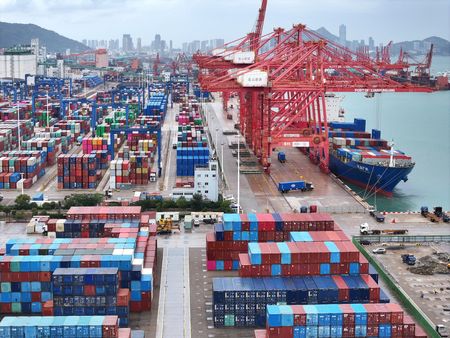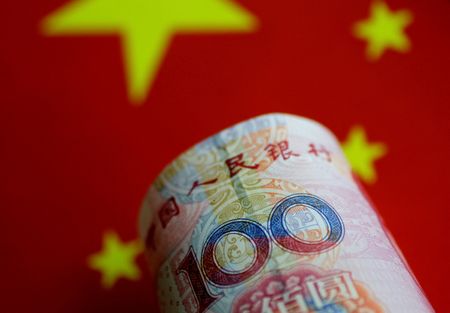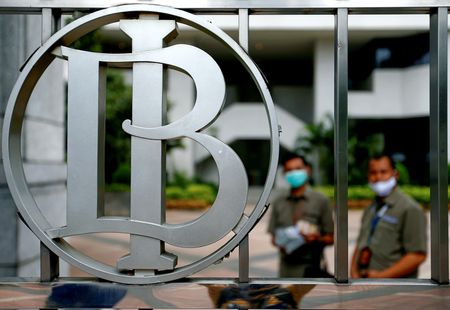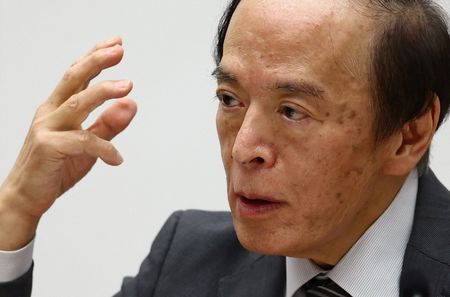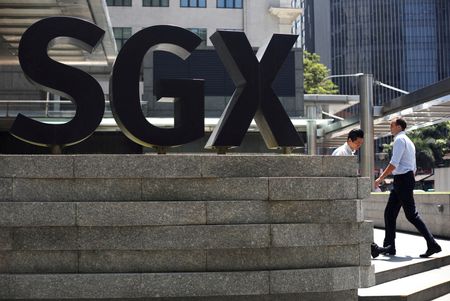By Joe Cash
BEIJING (Reuters) -China’s exports grew at the fastest pace in over two years in October as factories rushed inventory to major markets in anticipation of further tariffs from the U.S.
and the European Union, as the threat of a two-front trade war loomed large.
Donald Trump’s sweeping victory in the U.S. presidential election has brought into sharp focus his campaign pledge to impose tariffs on Chinese imports in excess of 60% and is likely to spur a shift in stocks to warehouses in China’s No.1 export market.
Trump’s tariff threat is rattling Chinese factory owners and officials, with some $500 billion worth of shipments annually on the line, while trade tensions with the EU, which last year took $466 billion worth of Chinese goods, have intensified.
Export momentum has been one bright spot for a struggling economy as household and business confidence has been dented by a prolonged property market debt crisis .
Outbound shipments from the world’s second-biggest economy grew 12.7% year-on-year last month, customs data showed on Thursday, blowing past a forecast 5.2% increase in a Reuters poll of economists and a 2.4% rise in September.
Imports fell 2.3%, compared with expectations for a drop of 1.5%, turning negative for the first time in four months.
China’s trade surplus grew to $95.27 billion last month, up from $81.71 billion in September.
“We can anticipate a lot of front-loading going into the fourth quarter, before the pressure kicks in come 2025,” said Xu Tianchen, senior economist at the Economist Intelligence Unit.
“I think it is mainly down to Trump.
The threat is becoming more real.”
TRUMP EFFECT
China’s exports to the U.S. increased an annual 8.1% last month, while outbound shipments to Europe jumped 12.7% over the same period.
“We expect shipments to stay strong in the coming months,” Zichun Huang, China economist at Capital Economics, said in a note.
“Any potential drag from Trump tariffs may not materialise until the second half of next year.”
“Trump’s return could create a short-term boost to Chinese exports as U.S.
importers increase their purchases to get ahead of the tariffs,” she added.
Among China’s top exports to the U.S. last year were smartphones, tablet computers and video games consoles, Chinese customs data shows, setting up a potential repeat of Trumps’s first term in office when he targeted Chinese electronics manufacturers.
There are signs demand for such products is dimming.
Trade data from South Korea and Taiwan pointed to cooling global demand, while German manufacturers have also reported they are struggling to find buyers overseas, leading analysts to conclude Chinese producers are slashing prices to find buyers or simply moving stocks out of China.
An official factory activity survey for October showed Chinese factories were still struggling to find buyers overseas.
“If the PMI new export sub-index has been going down, and the export figure goes up, I think it is safe to say it’s more of an inventory shift,” said Dan Wang, a Chinese economist based in Shanghai.
Exporters also had help from an easing in weather-related disruptions in September, enabling them to send out delayed orders.
China and Hong Kong stocks edged up on Thursday, supported by investor optimism over potential further stimulus measures, while the yuan recovered from a three-month low against the dollar.
The weaker yuan likely contributed to the surge in exports, analysts say, though it also made imports more expensive.
IMPORTS HIT BY WEAK DOMESTIC DEMAND
China’s imports from the European Union and Southeast Asian economies fell an annual 6.1% and 7.3% last month, respectively, while purchases from Japan just eked into growth.
The world’s biggest oil importer’s crude purchases fell 9%, marking a sixth consecutive monthly year-on-year decline.
“The further slowdown in import growth is mainly due to the weak recovery of domestic effective demand and impact of low import prices and rising bases,” said Zhou Maohua, a macroeconomic researcher at China Everbright Bank.
But China’s soybean imports surged last month, as grain merchants in the U.S.
raced to ship a record-large harvest to the Asian giant ahead of the now-concluded U.S. election.
Overall, as China’s trade engine faces challenges, economists have cautioned Beijing against becoming too reliant on outbound shipments for growth and urged officials to introduce more stimulus.
ANZ analysts expect policymakers to deliver a mix of monetary and other steps to overcome any higher tariffs under Trump.
“The authorities will also consider some policy measures to offset the tariff impacts such as subsidies or access to funding,” said Raymond Yeung, ANZ’s chief economist for greater China.
“Commercial policy measures will also include local consumption campaign and developing new export market among the Belt and Road countries.”
(Reporting by Joe CashEditing by Shri Navaratnam)

